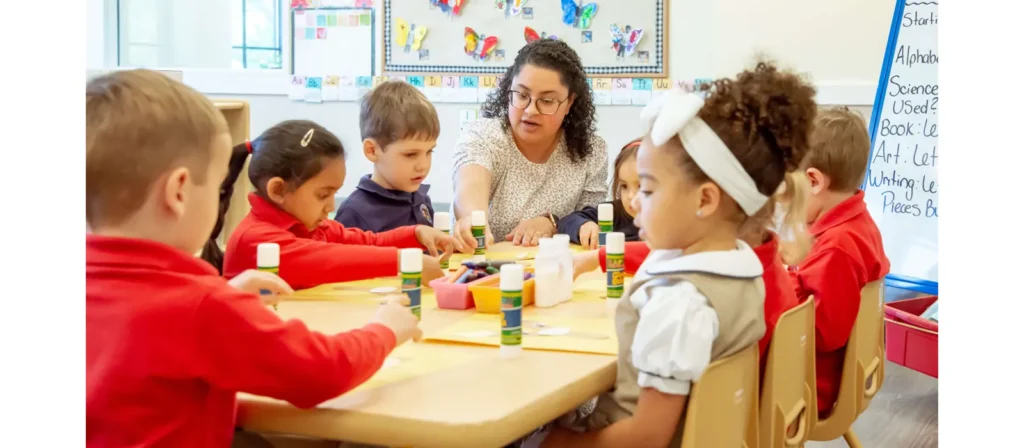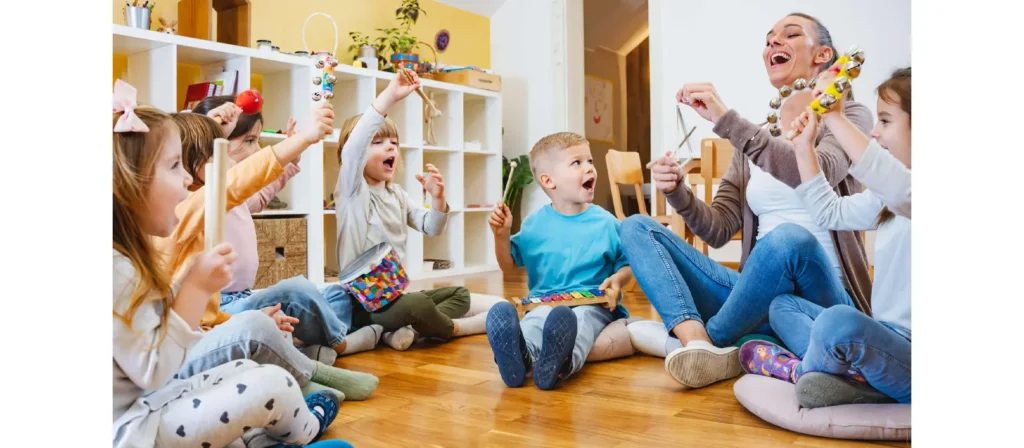Unsure whether your child should attend preschool or pre-K? Navigating early education can be confusing, especially with terms like preschool vs pre-K often used interchangeably. While both programs provide a strong start, they are designed for different age groups and have distinct goals.
In the next sections, we’ll compare their goals, age ranges, and teaching approaches so you can confidently decide which program is right for your child.
Defining Preschool vs Pre K
Preschool, often considered a child’s first formal step into education, is an early childhood program designed for children typically between the ages of 2.5 and 5. It’s a place where curiosity is nurtured, foundational skills are introduced, and social-emotional development takes center stage. While it’s not mandatory like kindergarten, preschool provides a crucial bridge between home life and more structured schooling.
Pre-K, short for “pre-kindergarten,” is a structured early childhood education program specifically designed for four- to five-year-olds in the year before they enter kindergarten. While it shares many similarities with preschool, Pre-K often bridges the more exploratory nature of preschool and the academic expectations of kindergarten. It focuses more intently on school readiness—academically, socially, and emotionally.

Preschool vs Pre-K: Key Similarities
Although preschool and pre-K are designed for slightly different age groups, they share many common goals and practices. Both programs focus on building a strong foundation for learning and development, ensuring that children feel supported, safe, and engaged.
Focus on Social and Emotional Growth
Both programs put a high priority on developing a child’s emotional intelligence (EQ). In these early learning environments, children get to practice key social skills like sharing toys, taking turns, and cooperating with peers. Teachers guide them in understanding and managing their feelings—whether it’s expressing frustration or celebrating a friend’s success. These foundational social and emotional skills are crucial for building confidence and navigating future relationships.
Learning Through Play
For young children, play is their most powerful tool for learning. In both preschool and Pre-K, the curriculum is play-based, which means academic concepts are introduced in a fun and natural way. Children learn about physics while stacking blocks, develop language skills during pretend play, and spark their creativity through art. These activities are more than just fun; they are essential for developing problem-solving skills, curiosity, and a lifelong love of learning.
A Holistic Approach to Development
Preschool and pre-K are not just about academics; they are about whole-child growth. Children have opportunities to develop fine and gross motor skills, expand their vocabulary, and explore early numeracy through fun, interactive activities.
A Nurturing and Safe Environment
Both programs create a structured yet warm classroom environment where children feel secure enough to explore and learn. Teachers establish predictable daily routines that balance free play with group activities and quiet time. This structure helps children feel comfortable, builds their independence, and prepares them for the more formal learning environment of elementary school.
What Are the Differences Between Preschool vs Pre K?
Preschool and Pre-K are designed for different developmental stages and serve distinct purposes in a child’s early education journey. Understanding the key differences can help parents choose the right program for their child.

Age and Purpose
- Preschool (Ages 2-4): Preschool is typically for younger children, often starting as early as age two. The primary focus is on socialization and fundamental skill-building. It’s often a child’s first structured experience away from home, teaching them how to interact with peers, follow simple routines, and build independence.
- Pre-K (Ages 4-5): Pre-K, short for “pre-kindergarten,” is specifically designed for children in the year leading up to kindergarten. The main goal is to prepare children for the academic and social demands of kindergarten. While still play-based, the curriculum has a stronger focus on early literacy, numeracy, and school readiness skills.
Curriculum and Focus
- Preschool: The curriculum is centered on broad, exploratory learning. Activities are often theme-based and focus on developing fine and gross motor skills, expanding vocabulary, and encouraging creativity. The emphasis is on learning through discovery rather than formal instruction.
- Pre-K: The curriculum is more structured and academically oriented. Teachers introduce and reinforce concepts that children will encounter in kindergarten, such as recognizing letters and their sounds, counting, understanding basic math concepts, and developing early writing skills. The goal is to bridge the gap between free play and formal schooling.
Schedule and Duration
- Preschool: Preschool programs are often more flexible, with options for two or three half-days per week. This allows children to gradually acclimate to a group setting. The shorter schedule is well-suited for a child’s first experience in a structured environment.
- Pre-K: Pre-K programs are generally more structured and may have longer hours, often running for a full school day, similar to kindergarten. This helps children get used to the routine of a full school day, including lunch and rest times, preparing them for the transition.
The Importance of Preschool vs Pre-K Education

When looking at preschool vs pre-k, one thing becomes clear—they both offer big benefits for young children. These programs help kids build important skills like listening, sharing, speaking clearly, and solving problems. In fun and supportive classrooms, children learn through play, stories, and hands-on activities. These early learning experiences create a strong base for kindergarten and beyond.
Preschool and pre-k also support healthy brain development during the years when children grow the fastest. They help kids become more confident, more independent, and more ready to learn. Studies show that children who attend early education programs do better in school and have more success later in life. So whether it’s preschool or pre-k, both give children a powerful head start.
Choose a Program for Your Child
Deciding between preschool vs pre k can feel overwhelming, but the right choice depends on your child’s age, needs, and development. If your child is younger—around 3 years old—and just starting to explore group learning, a preschool program might be the perfect place to begin. These programs are often more flexible, focusing on basic routines, social play, and early learning through fun activities.
On the other hand, if your child is 4 and approaching kindergarten age, pre-k may be a better fit. Pre-k programs are usually more structured and designed to prepare kids for the academic and behavioral expectations of kindergarten. They often include more focused lessons in early literacy, math, and critical thinking skills, while still using play as a learning tool.
It’s also important to consider your child’s personality and learning style. Some children thrive in a gentle, play-based preschool setting, while others are ready for the more advanced challenges of pre-k. When comparing preschool vs pre-k, visit programs in person, talk to teachers, and observe how your child responds to different learning environments. Trust your instincts—you’re the expert on your child.




